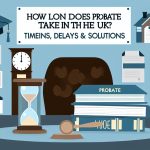Table of Contents

Key Takeaways
- UK asset property trusts offer a strategic way to manage and protect assets, with specific tax implications.
- Different types of trusts, such as bare, discretionary, and interest in possession, are taxed differently.
- Income tax rules vary significantly between trust types, affecting both trustees and beneficiaries.
- Capital gains tax can impact the value of trust-held assets, requiring careful planning and management.
- Understanding relevant and excluded property is crucial for effective estate planning and tax management.
Overview of UK Asset Property Trusts
When it comes to managing wealth and protecting assets, UK asset property trusts are a powerful tool. These trusts serve as legal arrangements where a person, known as the settlor, transfers assets to trustees to hold for beneficiaries. This process not only helps in asset management but also plays a crucial role in estate planning and tax mitigation. Let’s dive into the specifics of these trusts and understand their implications.
Definition of Property Trusts
At its core, a property trust is a legal structure designed to hold assets like money, land, or buildings. The settlor establishes the trust, transferring the assets to the trustees. The trustees are then responsible for managing the trust assets on behalf of the beneficiaries, who ultimately benefit from the trust. This setup allows for a degree of separation between the ownership and benefit of the assets, providing flexibility in management and tax advantages.
For example, if you own a property and want to ensure it benefits your children without transferring ownership directly, a property trust can be an ideal solution. It safeguards the asset while ensuring that your children benefit from it according to the terms you set out.
Common Types of Trusts Used
There are several types of trusts commonly used in the UK, each with its own characteristics and tax implications. Understanding these can help in selecting the right trust for your needs.
- Bare Trust: This is the simplest form, where assets are held in the name of a trustee for a beneficiary who has an absolute right to the capital and income. It’s often used for holding assets on behalf of minors.
- Discretionary Trust: Here, trustees have the power to decide how the trust income or capital is distributed among the beneficiaries. This flexibility can be advantageous for tax planning.
- Interest in Possession Trust: Beneficiaries are entitled to the income generated by the trust assets, but not the capital. This type is often used in estate planning to provide for a spouse while preserving capital for children.
Purpose and Benefits for Investors
Property trusts offer several benefits for investors and individuals looking to manage their wealth. Firstly, they provide a structured way to manage assets, ensuring that beneficiaries receive their intended share according to the settlor’s wishes. Additionally, trusts can offer significant tax advantages. By separating legal ownership from the benefit, trusts can help reduce inheritance tax liabilities and provide a means to manage capital gains tax more effectively.
Moreover, trusts offer privacy, as the details of the trust and its assets are not publicly disclosed. This can be particularly beneficial for individuals looking to protect their financial affairs from public scrutiny. Ultimately, the right trust can provide peace of mind, knowing that your assets are managed and distributed according to your wishes.
| Purpose | Benefits |
|---|---|
| Asset Protection | Shields property from personal financial risks (e.g., bankruptcy, lawsuits) |
| Tax Efficiency | Potential reduction in inheritance tax and capital gains tax |
| Estate Planning | Facilitates smooth transfer of wealth to beneficiaries |
| Long-term Care Cost Protection | Can protect property from being assessed for care home fees |
| Investment Diversification | Offers exposure to real estate market without direct property ownership |
| Stable Income Generation | Provides consistent rental income from trust-owned properties |
| Market Volatility Buffer | Creates a buffer against property market fluctuations |
| Succession Planning | Provides a clear path for passing on assets, avoiding probate complexities |
| Control Over Asset Distribution | Allows settlor to dictate terms of how and when beneficiaries receive inheritance |
| Professional Management | Active trusts offer expert property management and strategic decision-making |
| Potential for Capital Appreciation | Investment in properties with growth potential can increase trust value over time |
| Tax-Efficient Income | Some trusts (e.g., REITs) offer tax-efficient dividend distributions |
Income Tax Details
Income tax is a critical consideration when managing a property trust. Different types of trusts have distinct rules regarding income tax, affecting both the trustees and the beneficiaries. Let’s explore how income tax applies to various trusts and what it means for you.
Taxation of Bare Trusts
In a bare trust, the income generated by the trust assets is treated as the income of the beneficiary. This means that the beneficiary is responsible for paying any income tax due. Importantly, if the beneficiary is a minor and the income exceeds £100 annually, the income may be taxed as the parent’s income, depending on the circumstances. For those looking into broader financial planning, establishing a financial LPA can be a key consideration.
For example, if a parent sets up a bare trust for their child, and the trust generates £200 in interest annually, the parent may need to declare this income on their tax return. This can have implications for the parent’s overall tax liability and should be carefully considered when setting up the trust.
Rules for Discretionary Trusts
Discretionary trusts are more complex in terms of income tax. Here, the trustees are responsible for paying income tax on the trust’s income at the trust rate. However, when income is distributed to beneficiaries, they may be entitled to reclaim some of the tax paid, depending on their individual tax circumstances.
This setup allows for flexibility in managing tax liabilities, as the trustees can decide when and how much income to distribute. Therefore, careful planning and management are essential to optimize tax efficiency and ensure that beneficiaries receive the maximum benefit.
Interest in Possession Trusts Explained
Interest in possession trusts have a unique tax structure. The beneficiary, who has the right to the trust’s income, is taxed on that income as if they owned the assets directly. Therefore, the tax liability falls on the beneficiary, and they must include the income on their personal tax return.
This arrangement can be beneficial in certain estate planning scenarios, particularly when trying to balance providing for a spouse while preserving capital for future generations. However, it’s essential to understand the tax implications fully and ensure that beneficiaries are prepared to manage their tax responsibilities.
Impact on Discretionary Trusts
Discretionary trusts offer flexibility but come with their own set of tax challenges. Trustees are tasked with paying income tax on the trust’s income at the rate applicable to trusts, which is often higher than personal tax rates. This can impact the overall returns on the trust’s investments. For those navigating these complexities, understanding the role of the Court of Protection can be crucial.
Despite this, the flexibility of discretionary trusts allows trustees to distribute income in a tax-efficient manner. Trustees can choose to accumulate income within the trust or distribute it to beneficiaries, depending on their tax circumstances. This means trustees must be strategic, balancing the immediate tax liabilities with the long-term benefits for beneficiaries.
Moreover, when income is eventually distributed, beneficiaries may be able to reclaim some of the tax paid, provided their personal tax rate is lower than the trust rate. This makes it crucial for trustees to understand the tax profiles of beneficiaries and plan distributions accordingly.
Interest in Possession Tax Implications
Interest in possession trusts have straightforward tax implications for the beneficiary, who is entitled to the trust’s income. The beneficiary must report this income on their personal tax return and pay any applicable taxes. This setup provides transparency and predictability in tax liabilities, which can be advantageous for estate planning.
Inheritance Tax Overview
Inheritance tax (IHT) is a significant consideration for anyone using trusts to manage their estate. Trusts can help mitigate IHT liabilities, but they also come with specific rules and charges that need to be understood. Generally, IHT may be payable when assets are transferred into a trust, during the trust’s lifetime, or when assets are distributed out of the trust. For those managing business interests, understanding when you need a business LPA can also be crucial.
Bare Trusts and Estate Taxation
Bare trusts are straightforward when it comes to inheritance tax. Assets held in a bare trust are considered part of the beneficiary’s estate for IHT purposes. This means that if the beneficiary passes away, the value of the assets in the bare trust is included in their estate and subject to IHT.
This can be beneficial if the beneficiary has not used up their IHT allowance, as it allows for the efficient transfer of assets. However, it can also lead to unexpected tax liabilities if not carefully planned.
- Bare trusts are taxed as part of the beneficiary’s estate.
- Beneficiaries must consider their IHT allowance.
- Efficient planning can mitigate potential tax liabilities.
Discretionary Trust Asset Charges
Discretionary trusts face more complex IHT rules. Assets in these trusts are subject to periodic charges, commonly known as the “10-year anniversary charge.” This charge is levied every ten years based on the value of the trust’s assets. For families and caregivers dealing with trust management, understanding the Court of Protection can be crucial.
“The 10-year anniversary charge can significantly impact the trust’s value, making it essential for trustees to plan for this liability.”
Besides the periodic charge, exit charges may apply when assets are distributed from the trust. These charges can reduce the overall benefit of the trust, so it’s vital for trustees to understand and plan for them.
Assets in Interest in Possession Trusts
Assets in interest in possession trusts are generally included in the estate of the life tenant (the beneficiary entitled to the income) for IHT purposes. This means that when the life tenant passes away, the value of the trust assets is included in their estate. For more information, you can visit the UK government’s guidance on trusts and inheritance tax.
However, these trusts can be structured to provide for a spouse while preserving capital for children, offering a balance between immediate support and long-term asset protection.
- Assets are included in the life tenant’s estate.
- Can provide for a spouse while preserving capital.
- Requires careful structuring to balance benefits.
Transfers of Assets and Their Tax Impact
Transferring assets into and out of trusts can have significant tax implications. Understanding these implications is crucial for effective estate planning and minimizing tax liabilities.
Transferring Into a Bare Trust
When transferring assets into a bare trust, it’s important to note that the transfer is considered a gift for IHT purposes. If the settlor survives for seven years after the transfer, the gift may fall outside their estate, potentially reducing IHT liabilities. For more insights, you can explore the Court of Protection and its implications.
However, if the settlor does not survive for seven years, the value of the assets may be included in their estate, potentially leading to IHT liabilities. Therefore, timing and planning are crucial when setting up a bare trust.
Implications for Discretionary Trust Transfers
Transferring assets into a discretionary trust can trigger an immediate IHT charge if the value exceeds the nil-rate band. This charge can impact the overall value of the trust, so it’s essential to plan these transfers carefully.
System for Interest in Possession Trusts
For interest in possession trusts, transferring assets into the trust may not trigger an immediate IHT charge, as the assets are generally considered part of the life tenant’s estate. However, it’s important to structure these trusts correctly to ensure that the intended benefits are realized.
Excluded and Relevant Property Explained
Understanding the difference between excluded and relevant property is vital for effective trust management. Excluded property is not subject to IHT, while relevant property is. Knowing which assets fall into each category can help optimize tax efficiency and asset protection.
Excluded property typically includes certain types of overseas assets and assets held in specific types of trusts. On the other hand, most assets held in UK trusts are considered relevant property and are subject to IHT rules.
Effective estate planning involves identifying which assets are excluded and relevant, and structuring trusts accordingly to minimize tax liabilities and protect assets for future generations.
Types of Excluded Property
In the context of UK asset property trusts, excluded property refers to certain assets that are not subject to Inheritance Tax (IHT). This can include specific overseas assets and certain types of holdings within specialized trusts. Understanding which assets qualify as excluded property is crucial for effective tax planning. For instance, establishing a financial LPA can be an integral part of securing your financial future.
For instance, if you hold foreign investments within a trust, these might be classified as excluded property, thereby not attracting IHT. This classification can significantly impact the overall tax liability of the trust and should be carefully considered when planning your estate.
Understanding Relevant Property
Relevant property is a term used to describe most assets held within UK trusts that are subject to IHT. This includes money, land, buildings, and other tangible assets. The classification of an asset as relevant property means that it will be subject to IHT rules, including periodic and exit charges.
These charges can affect the value of the trust over time, making it essential for trustees to understand and plan for them. Proper management of relevant property can help minimize these charges and preserve the trust’s value for beneficiaries.
Exit Charges and Periodic Charges
Exit charges occur when assets are distributed out of a trust, while periodic charges are levied every ten years on the value of the trust’s assets. Both types of charges can significantly impact the trust’s overall value, so understanding them is critical for effective trust management.
For discretionary trusts, the ten-year anniversary charge is a notable consideration. This charge is calculated based on the value of the trust’s assets and can be a substantial cost. Planning for this charge is essential to ensure the trust remains beneficial for its intended purpose.
Final Thoughts on Investment Strategy
When it comes to UK asset property trusts, strategic planning and management are key to maximizing benefits and minimizing tax liabilities. Understanding the different types of trusts and their tax implications is crucial for effective estate planning and wealth management.
Balancing Risks and Benefits
Choosing the right type of trust involves balancing the potential tax benefits with the inherent risks and responsibilities of trust management. Consider your long-term financial goals, the needs of your beneficiaries, and the complexity of each trust type before making a decision. For more insights, you might find it helpful to explore the Court of Protection and how it impacts trust management.
Consulting with financial advisors and tax professionals can provide valuable insights and help you navigate the complexities of trust management. Their expertise can ensure that your trust structure aligns with your overall financial strategy and provides the maximum benefit to your beneficiaries.
Choosing the Right Type of Trust
The right type of trust for you will depend on your specific circumstances, goals, and the needs of your beneficiaries. Whether you’re looking to provide for a spouse, protect assets for future generations, or minimize tax liabilities, understanding the nuances of each trust type is essential.
Take the time to research and understand the implications of each trust type, and seek professional guidance to ensure your trust structure aligns with your objectives. With careful planning and management, UK asset property trusts can be a powerful tool for wealth protection and estate planning.
Frequently Asked Questions (FAQ)
What are the main types of property trusts in the UK?
In the UK, the main types of property trusts include bare trusts, discretionary trusts, and interest in possession trusts. Each type has unique characteristics and tax implications, making it important to choose the right one based on your specific needs and goals.
How do taxation rules vary between trust types?
Taxation rules differ significantly between trust types. Bare trusts are taxed as part of the beneficiary’s estate, while discretionary trusts face periodic and exit charges. Interest in possession trusts involve the life tenant being taxed on the income generated by the trust assets.
Understanding these differences is crucial for effective trust management and minimizing tax liabilities.
What factors influence capital gains tax on trusts?
Capital gains tax on trusts is influenced by the type of trust, the nature of the assets held, and the timing of asset sales. Trustees need to carefully manage asset transactions to optimize tax efficiency and preserve the trust’s value.
What defines relevant property in trust terms?
Relevant property includes most assets held within UK trusts that are subject to inheritance tax. This can encompass money, land, buildings, and other tangible assets. Proper classification of assets as relevant or excluded property is essential for effective tax planning.
By understanding the implications of relevant property, trustees can better manage tax liabilities and ensure the trust remains beneficial for its intended purpose. For those looking to secure peace of mind, investing in a health welfare LPA can be a crucial step.






